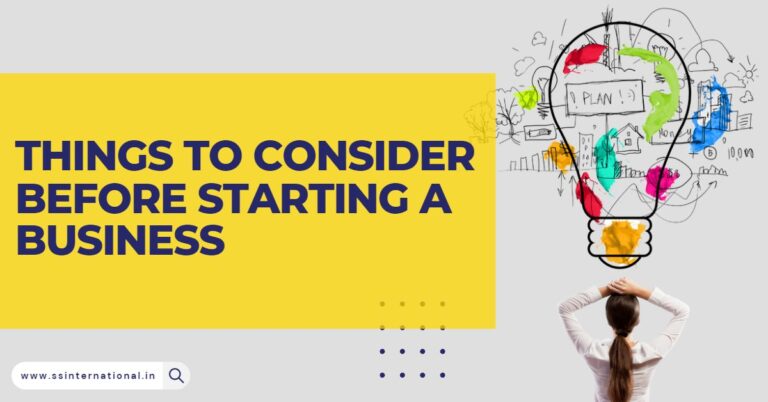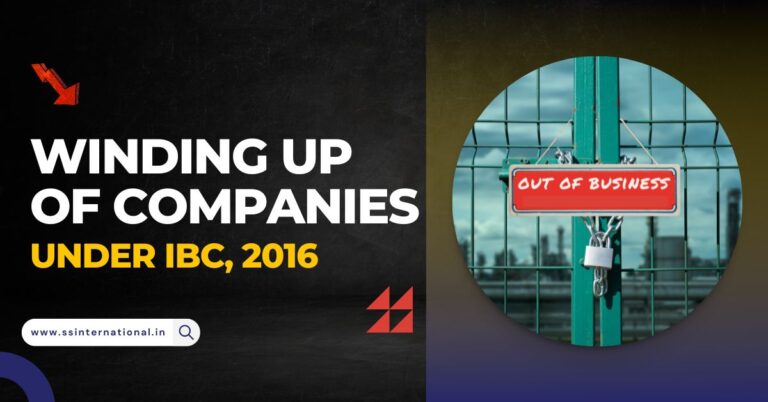
In a world where 40% of businesses fail to reopen after a disaster, and a further 25% close within a year, the importance of business continuity cannot be overstated. As we step into 2024, the landscape of global business is more volatile and interconnected than ever. Rapid technological advancements, shifting geopolitical scenarios, and evolving market dynamics make agility and resilience not just virtues but necessities for survival and success. This stark reality places an immense responsibility on business leaders to not only anticipate disruptions but to effectively navigate through them.
What’s in it for me? This blog is your compass in the complex world of business continuity. It’s crafted to equip you with the latest strategies, insights, and tools essential for steering your organization through the unpredictable waves of 2024 and beyond. By engaging with the insights presented here, you, as a business leader, will be empowered to fortify your enterprise against unforeseen challenges, ensuring not just survival but a thriving competitive edge in a rapidly transforming global market.
The Evolving Global Business Environment
In 2024, the global business environment is a kaleidoscope of emerging trends and challenges. Understanding these elements is crucial for businesses aiming to adapt and thrive in a rapidly changing world.
Key Trends in the Global Business Landscape
- Technological Innovation:
- The integration of AI and machine learning in business processes for enhanced efficiency, predictive analytics, and customer service automation.
- The growing use of blockchain for secure and transparent transactions, impacts sectors like finance, supply chain management, and intellectual property rights.
- Sustainability and Environmental Concerns:
- A shift towards green energy sources and eco-friendly practices to meet consumer demand and regulatory requirements, impacting product design, manufacturing processes, and supply chain logistics.
- The rise of sustainable investment and ESG (Environmental, Social, Governance) criteria in business evaluations and stakeholder decision-making.
- Remote and Hybrid Work Models:
- The proliferation of remote work tools and platforms, reshaping team collaboration, communication, and productivity.
- The emerging challenges in maintaining company culture and employee engagement in a hybrid work environment.
- Globalization vs. Localization:
- Balancing global expansion with localized strategies to cater to diverse markets, including customization of products and services to meet local tastes and regulatory conditions.
- Navigating the complexities of cross-cultural communication and multinational team management.
Challenges and Opportunities
- Economic Volatility:
- Responding to market fluctuations with agile financial planning and adaptive business models.
- Identifying new market opportunities emerging from geopolitical shifts and policy changes.
- Cybersecurity Threats:
- Implementing comprehensive cybersecurity protocols to safeguard against data breaches, ransomware attacks, and other digital threats.
- Continual updating of IT infrastructure and employee training to counter evolving cyber risks.
- Supply Chain Disruptions:
- Developing resilient supply chains through diversified sourcing, digital tracking, and contingency planning.
- Exploring local sourcing options and investing in supply chain technologies like IoT for real-time monitoring and analytics.
- Changing Consumer Behaviours:
- Adapting to digital consumer trends, including the rise of e-commerce, online services, and personalized marketing.
- Staying attuned to shifts in consumer values, such as increased focus on health, wellness, and ethical consumption.
Impact of International Economic and Political Changes
- Market Dynamics:
- Adjusting to the impacts of new trade agreements and tariffs on global supply and demand dynamics.
- Leveraging emerging markets and adapting to the shifting economic power balance.
- Regulatory Compliance:
- Staying updated with global and regional regulatory changes, including data protection laws, labour standards, and environmental regulations.
- Implementing compliance mechanisms to seamlessly operate across multiple jurisdictions.
- Political Instability:
- Assessing and mitigating risks related to political unrest, including currency volatility and potential disruptions to business operations.
- Developing strategies for quick adaptation to changing political landscapes, especially in geopolitically sensitive regions.
Core Principles of Business Continuity Planning
In the ever-changing business landscape of 2024, the ability to anticipate, prepare for, and respond to potential disruptions is crucial. Business Continuity Planning (BCP) is the strategic blueprint that enables this resilience.
Essential Elements of a Robust Business Continuity Plan (BCP):
- Comprehensive Risk Assessment:
- Identifying potential risks, including natural disasters, technological failures, and human factors, that could impact business operations.
- Analysing the probability and potential impact of these risks to prioritize them effectively.
- Business Impact Analysis (BIA):
- Evaluating how different types of disruptions could affect various aspects of the business, including financial performance, reputation, and legal compliance.
- Identifying critical business functions and processes that are essential for the organization’s survival and recovery.
- Strategy Development:
- Developing strategies for business operations continuity, including alternative processes, resource reallocation, and use of contingency sites.
- Creating recovery strategies for IT systems, data recovery, and maintaining essential services.
- Plan Documentation and Implementation:
- Documenting a detailed BCP that is easily understandable and accessible to all relevant stakeholders.
- Implementing the plan through training, exercises, and drills to ensure staff readiness and plan efficacy.
- Communication Plan:
- Establishing clear lines of communication internally and externally, including with employees, customers, suppliers, and emergency services.
- Developing a crisis communication strategy to manage information dissemination and public relations during and after a disruption.
- Regular Review and Updating:
- Continually reviewing and updating the BCP to reflect changes in the business environment, organizational structure, technology, and emerging risks.
- Ensuring the BCP evolves with the business, remaining relevant and effective.
Incorporating Technological Advancements and Digital Solutions in BCP:
- Leveraging Technology for Resilience:
- Utilizing cloud computing for data backup and remote access to ensure business operations can continue from anywhere.
- Implementing automation and AI-driven solutions for rapid response and recovery during disruptions.
- Cyber Resilience:
- Integrating strong cybersecurity measures into the BCP to protect against cyber threats that can disrupt business operations.
- Regularly testing and updating cyber defence strategies in line with current cyber threat landscapes.
- Data Management and Analytics:
- Employing advanced data analytics for real-time risk assessment and decision-making.
- Ensuring robust data management practices for the integrity and availability of critical data during crises.
Risk Identification and Management
In 2024, effective risk management is vital for business continuity, requiring a proactive approach to identifying and mitigating potential threats.
Identifying Potential Risks and Challenges:
- Market and Economic Risks: Monitoring market trends and economic indicators for potential impacts on business operations and financial stability.
- Technological Risks: Addressing threats like cybersecurity breaches and system failures through regular IT updates and robust security protocols.
- Operational Risks: Identifying vulnerabilities in operations, including supply chain issues and equipment failures, and preparing contingency plans.
- Legal and Regulatory Risks: Staying informed about legal changes and ensuring compliance to avoid penalties and reputational harm.
Strategies for Effective Risk Management:
- Risk Assessment and Prioritization: Conducting assessments to determine the likelihood and impact of threats, focusing on the most critical risks.
- Creating a Risk-Aware Culture: Training employees to recognize and report potential risks, fostering proactive monitoring.
- Risk Mitigation Planning: Developing detailed response strategies for identified risks, including preventive measures and resource allocation.
- Continuous Monitoring: Regularly updating risk strategies to align with new challenges and utilizing risk management tools for ongoing analysis.
Ensuring Operational Resilience
Operational resilience is crucial for businesses in 2024, demanding innovative and adaptable approaches to sustain and enhance business functions under diverse conditions.
Methods to Maintain and Enhance Operational Stability:
Flexible Operational Models:
- Adopting flexible operational frameworks that allow quick adaptation to changing market conditions or disruptions.
- Implementing agile methodologies across departments to facilitate rapid response to unforeseen events.
Advanced Forecasting and Scenario Planning:
- Utilizing predictive analytics and scenario planning tools to foresee potential operational challenges and plan accordingly.
- Regularly updating scenarios based on current data to stay ahead of potential operational disruptions.
Strengthening Supply Chain Resilience:
- Investing in technology to gain real-time visibility into the supply chain, enabling proactive management of potential issues.
- Building relationships with multiple suppliers and considering local sourcing options to reduce dependency on single points of failure.
Human Resource Flexibility and Training:
- Developing cross-training programs to ensure staff can fill multiple roles in case of workforce disruptions.
- Embracing remote working capabilities and flexible staffing models to maintain operations regardless of physical location constraints.
Continuous Process Improvement:
- Implementing a culture of continuous improvement, encouraging innovation in operational processes to enhance efficiency and resilience.
- Regularly reviewing and optimizing operational workflows to eliminate inefficiencies and strengthen the overall business structure.
Embracing Technological Solutions
In 2024, leveraging technology is not just about staying current; it’s a strategic imperative for business continuity and competitive advantage.
Role of Advanced Technologies in Business Continuity:
Artificial Intelligence and Machine Learning:
- Deploying AI and ML for predictive analytics, helping businesses anticipate market changes and customer needs.
- Utilizing these technologies for automating complex decision-making processes, enhancing both speed and accuracy.
Internet of Things (IoT):
- Implementing IoT solutions for real-time monitoring of assets, enabling proactive maintenance and reducing downtime.
- Using IoT to enhance customer experiences through personalized and efficient service delivery.
Blockchain for Enhanced Security and Transparency:
- Applying blockchain technology to secure transactions and protect against fraud, particularly in finance and supply chain management.
- Leveraging blockchain for maintaining transparent and tamper-proof records, building trust with customers and partners.
Integration of Digital Tools and Platforms for Seamless Operations:
Cloud Computing:
- Utilizing cloud services for scalable and flexible IT resources, ensuring operational continuity even in disruptive scenarios.
- Embracing cloud-based collaboration tools to support remote and hybrid working models effectively.
Cybersecurity Solutions:
- Investing in advanced cybersecurity solutions to protect against evolving digital threats, including next-generation firewalls, intrusion detection systems, and AI-based threat monitoring.
- Implementing comprehensive cybersecurity training for employees to raise awareness and prevent potential breaches.
Data Analytics and Big Data:
- Utilizing big data analytics to gather actionable insights, drive strategic decisions, and predict customer behaviours.
- Employing data analytics for optimizing business processes, improving product development, and personalizing marketing strategies.
Enhancing Customer Engagement with Digital Technologies:
Mobile and Web Applications:
- Developing user-friendly mobile and web applications to offer customers convenient access to products and services.
- Leveraging these platforms for personalized customer engagement and feedback collection.
Virtual and Augmented Reality:
- Implementing VR and AR technologies for innovative product demonstrations, training, and enhancing customer experiences.
- Exploring AR for retail environments to provide immersive and interactive shopping experiences.
Regulatory Compliance and Legal Considerations
In the dynamic business world of 2024, regulatory compliance and legal considerations are integral to maintaining business integrity and continuity.
Key Legal and Regulatory Areas for Compliance:
- Data Protection: Staying compliant with international and local data privacy laws like GDPR is crucial. Implementing stringent data handling and security practices ensures the protection of customer data and builds trust.
- Employment Laws: Adapting to the evolving legal landscape related to employment, particularly for remote and hybrid work models, ensures fair labour practices and mitigates the risk of legal disputes.
- Environmental Regulations: Aligning business operations with current environmental regulations demonstrates a commitment to sustainability, meeting legal standards, and satisfying increasingly eco-conscious consumers.
Strategies for Ensuring Compliance:
- Compliance Programs: Developing comprehensive compliance programs that are regularly reviewed and updated is essential. Regular training for employees ensures they are aware of and adhere to these standards.
- Legal Risk Assessment: Conducting thorough legal audits periodically helps identify potential compliance risks and vulnerabilities, allowing for proactive risk management and mitigation strategies.
- Effective Documentation: Ensuring all contracts, agreements, and legal documents are current, clear, and compliant is vital. Efficient document management systems aid in tracking and accessing these documents when needed.
Building a Compliance-Centric Culture:
- Leadership Involvement: Active promotion of compliance by company leadership helps integrate these practices into the company culture. This top-down approach reinforces the importance of legal adherence across all levels.
- Stakeholder Communication: Regular and transparent communication with stakeholders about compliance efforts helps align them with the organization’s compliance strategies and overall business objectives.
Financial Planning and Resource Allocation
In 2024, savvy financial planning and strategic resource allocation are more important than ever for businesses to navigate uncertainty and capitalize on new opportunities.
Financial Strategies for Sustaining Operations During Crises:
- Agile Financial Planning: Implementing flexible financial strategies that can quickly adapt to changing economic conditions, allowing for rapid response to unforeseen events.
- Emergency Fund and Cash Flow Management: Establishing an emergency fund and managing cash flow meticulously to ensure liquidity during challenging times.
- Diversification of Revenue Streams: Exploring and developing diverse revenue sources to reduce dependence on a single stream, thereby minimizing financial risks.
Effective Resource Allocation for Maximum Resilience:
- Optimizing Resource Utilization: Conducting regular reviews of resource utilization to ensure efficiency and effectiveness, avoiding wastage, and maximizing return on investment.
- Investing in Key Areas: Focusing investments on critical areas such as technology, staff training, and research and development, which can drive growth and resilience.
- Adapting to Changing Market Demands: Being ready to reallocate resources swiftly in response to evolving market demands, ensuring the business remains relevant and competitive.
Long-Term Financial Sustainability:
- Strategic Financial Forecasting: Engaging in long-term financial forecasting to anticipate future financial scenarios and prepare accordingly.
- Risk Management in Financial Decisions: Incorporating risk management into financial decisions, balancing potential rewards with associated risks.
- Stakeholder Communication: Maintaining transparent communication with stakeholders regarding financial strategies, ensuring alignment with overall business goals.
Employee Well-being and Organizational Culture
In 2024, prioritizing employee well-being and fostering a supportive organizational culture are key to sustaining business success and resilience.
Importance of Prioritizing Employee Health and Well-being:
- Mental Health Support: Implementing programs and initiatives that support mental health, such as counselling services, stress management workshops, and flexible work arrangements.
- Physical Health and Safety: Ensuring a safe workplace environment, whether in-office or remote, and promoting physical health through wellness programs and health benefits.
- Work-Life Balance: Encouraging work-life balance to prevent burnout, fostering employee satisfaction and productivity.
Building a Culture That Supports Resilience and Adaptability:
- Promoting a Resilient Mindset: Cultivating an organizational culture that values resilience, adaptability, and continuous learning.
- Fostering Inclusivity and Collaboration: Creating an inclusive environment that encourages collaboration, innovation, and diverse perspectives.
- Recognizing and Rewarding Efforts: Regularly acknowledging and rewarding employee contributions, reinforcing a positive and motivating work culture.
Preparing for the Future: Long-term Strategies
As businesses navigate 2024, developing forward-thinking strategies is crucial for adapting to future uncertainties and sustaining growth.
Developing Forward-Thinking Strategies for Future Uncertainties:
- Scenario Planning: Engaging in scenario planning to anticipate various future states and prepare adaptable strategies.
- Investing in Innovation: Prioritizing investments in innovation and research to stay ahead of industry trends and technological advancements.
- Building Agile Structures: Designing organizational structures and processes that are flexible and can quickly adapt to change.
Embracing Change and Innovation for Sustained Growth:
- Cultivating a Culture of Innovation: Encouraging a company-wide culture that embraces change and fosters continuous innovation.
- Leveraging Emerging Technologies: Staying abreast of and integrating emerging technologies to enhance business processes and customer experiences.
- Strategic Partnerships and Collaborations: Forming strategic partnerships and collaborations to expand capabilities, enter new markets, and share knowledge.
Conclusion
As we conclude our comprehensive journey through “Ensuring Business Continuity in 2024,” it’s clear that the path ahead for businesses is both challenging and ripe with opportunities. In a world where change is the only constant, adaptability, foresight, and resilience are the keys to not just surviving but thriving.
We’ve traversed the evolving landscapes of global business environments, understood the importance of robust business continuity planning, and recognized the necessity of proactive risk management. Operational resilience has been highlighted as a cornerstone for success, and the pivotal role of technology in shaping business futures has been underscored.
The discussions on regulatory compliance and legal considerations remind us that navigating the complexities of modern business goes beyond just financial acumen and operational strategies. It’s also about adhering to ethical standards and legal frameworks, ensuring that businesses not only grow but also contribute positively to society.
Our focus on financial planning and resource allocation, along with the emphasis on employee well-being and organizational culture, underlines the multifaceted nature of modern business management. It’s a balancing act between financial health, technological advancement, human resources, and ethical governance.
As we look towards the future with our section on long-term strategies, it’s evident that the future belongs to those who are prepared. Businesses that are willing to embrace change, invest in innovation, and foster a culture of continuous improvement will lead the way.
In conclusion, the journey to ensuring business continuity in 2024 is complex, but with the right strategies, tools, and mindset, it is a journey that can lead to unparalleled growth and success. The future is not just about predicting changes but about being ready for them, adapting to them, and ultimately, leveraging them for success.



